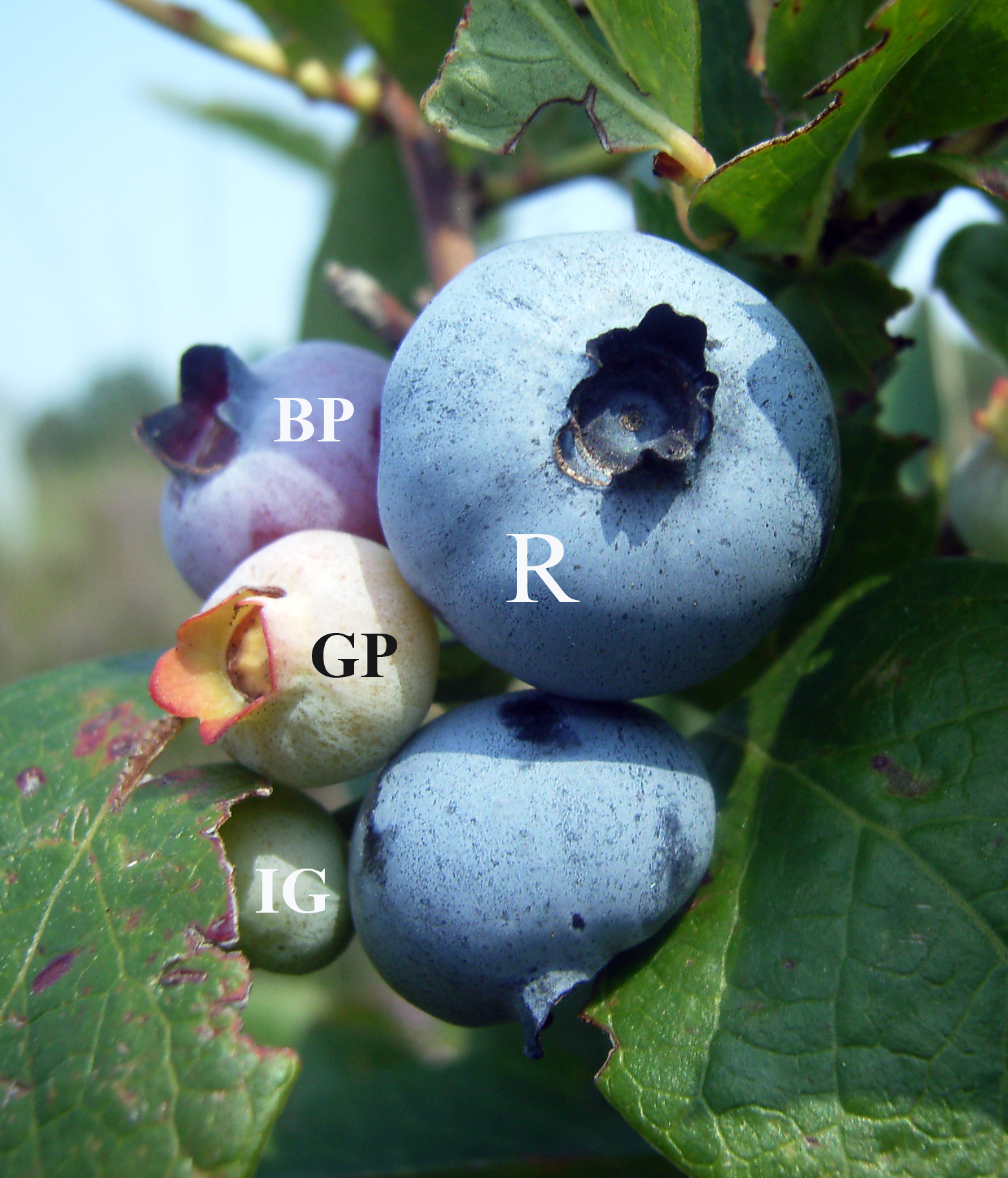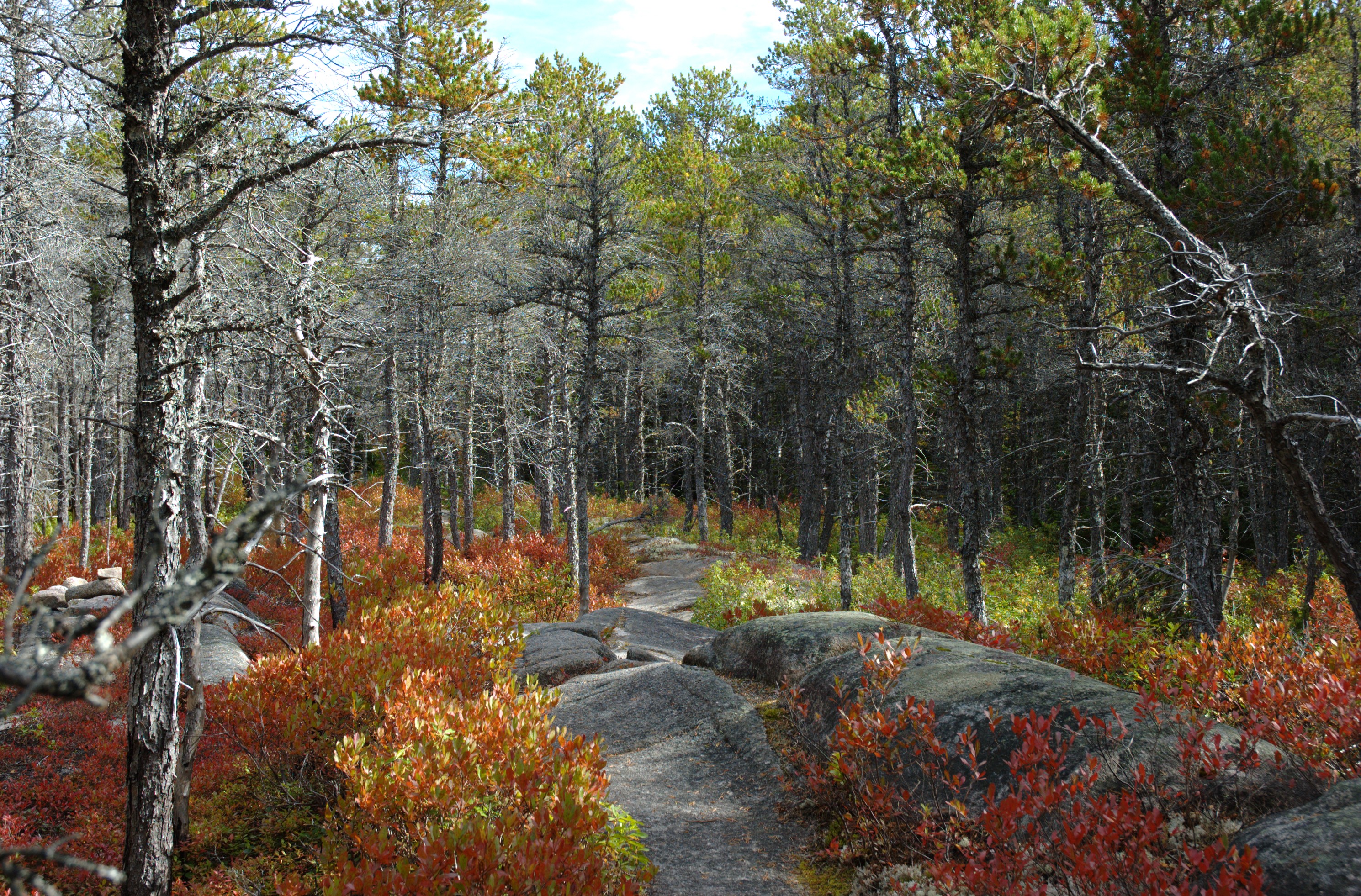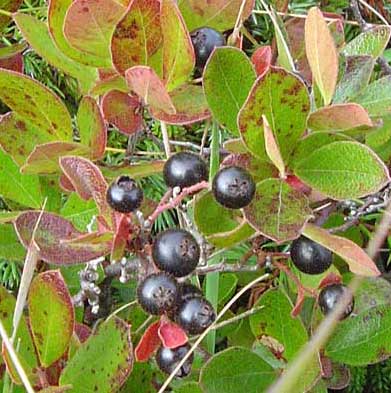|
Blueberries
Blueberries are a widely distributed and widespread group of perennial flowering plants with blue or purple berries. They are classified in the section ''Cyanococcus'' with the genus ''Vaccinium''. Commercial blueberries—both wild (lowbush) and cultivated (highbush)—are all native to North America. The highbush varieties were introduced into Europe during the 1930s. Blueberries are usually prostrate shrubs that can vary in size from to in height. In the commercial production of blueberries, the species with small, pea-size berries growing on low-level bushes are known as "lowbush blueberries" (synonymous with "wild"), while the species with larger berries growing on taller, cultivated bushes are known as "highbush blueberries". Canada is the leading producer of lowbush blueberries, while the United States produces some 40% of the world's supply of highbush blueberries. Description Many species of blueberries grow wild in North America, including '' Vaccinium myrtilloi ... [...More Info...] [...Related Items...] OR: [Wikipedia] [Google] [Baidu] |
Vaccinium Angustifolium
''Vaccinium angustifolium'', commonly known as the wild lowbush blueberry, is a species of blueberry native to eastern and central Canada and the northeastern United States. It is the most common commercially used wild blueberry and is considered the "low sweet" berry. Description ''Vaccinium angustifolium'' is a low spreading deciduous shrub growing tall. Its rhizomes can lie dormant up to 100 years, and when given the adequate amount of sunlight, soil moisture, and oxygen content they will sprout. The leaves are glossy blue-green in summer, turning a variety of reds in the fall. The leaf shape is broad to elliptical. Buds are brownish red in stem axils. The flowers are white or pink, bell-shaped, long. The fruit is a small sweet dark blue to black berry, full of antioxidants and flavonoids. Several buds may be on a healthy stem, and each bud can open up and have several blossoms. A blueberry field that has full plant coverage can have as many as 150 million blossoms per ... [...More Info...] [...Related Items...] OR: [Wikipedia] [Google] [Baidu] |
Vaccinium Fruechte Reifestadien
''Vaccinium'' is a common and widespread genus of shrubs or dwarf shrubs in the heath family (Ericaceae). The fruits of many species are eaten by humans and some are of commercial importance, including the cranberry, blueberry, bilberry (whortleberry), lingonberry (cowberry), and huckleberry. Like many other heath plants, they are restricted to acidic soils. Description The plant structure varies between species: some trail along the ground, some are dwarf shrubs, and some are larger shrubs perhaps tall. Some tropical species are epiphytic. Stems are usually woody. Flowers are epigynous with fused petals and have long styles that protrude from their bell-shaped corollas. Stamens have anthers with extended tube-like structures called "awns" through which pollen falls when mature. Inflorescences can be axillary or terminal. The fruit develops from an inferior ovary and is a four- or five-parted berry; it is usually brightly coloured, often red or bluish with purple juic ... [...More Info...] [...Related Items...] OR: [Wikipedia] [Google] [Baidu] |
Vaccinium Caesariense
''Vaccinium caesariense'' (New Jersey blueberry) is a ''Vaccinium'' species native to the Eastern United States. Description ''Vaccinium caesariense'' is a perennial plant and a dicot exhibiting a shrub growth habit, meaning it is not likely to grow larger than in height, particularly due to its numerous woody stems. During summer, it has simple, small, oval green leaves, which it loses by winter. Distribution and habitat ''Vaccinium caesariense'' is native to the Eastern United States, and is especially prominent in the New Jersey area, hence both its common and its scientific name ("Nova Caesarea" being the usual Latin name of New Jersey). It is found in the coastal states from Florida to New Hampshire, almost always in wetlands. Some of its native habitats include pine barrens, upland meadows and woods, ravines, and mountain summits. Cultivation and conservation In commercial cultivation of ''Vaccinium caesariense'', they are usually planted at the beginning of fall or t ... [...More Info...] [...Related Items...] OR: [Wikipedia] [Google] [Baidu] |
Berry (botany)
In botany, a berry is a fleshy fruit without a drupe, drupe (pit) produced from a single flower containing one Ovary (botany), ovary. Berries so defined include grapes, Ribes, currants, and tomatoes, as well as cucumbers, eggplants (aubergines), persimmons and bananas, but exclude certain fruits that meet the berry, culinary definition of berries, such as strawberries and raspberries. The berry is the most common type of fleshy fruit in which the entire outer layer of the ovary wall ripens into a potentially edible "pericarp". Berries may be formed from one or more gynoecium, carpels from the same flower (i.e. from a simple or a compound ovary). The seeds are usually embedded in the fleshy interior of the ovary, but there are some non-fleshy exceptions, such as ''Capsicum'' species, with air rather than pulp around their seeds. Many berries are edible, but others, such as the Potato fruit, fruits of the potato and the deadly nightshade, are poisonous to humans. A plant that be ... [...More Info...] [...Related Items...] OR: [Wikipedia] [Google] [Baidu] |
Huckleberries
Huckleberry is a name used in North America for several plants in the family Ericaceae, in two closely related genera: ''Vaccinium'' and ''Gaylussacia''. Nomenclature The name 'huckleberry' is a North American variation of the English dialectal name variously called 'hurtleberry' or 'whortleberry' () for the bilberry. In North America, the name was applied to numerous plant variations, all bearing small berries with colors that may be red, blue, or black. It is the common name for various ''Gaylussacia'' species, and some ''Vaccinium'' species, such as ''Vaccinium parvifolium'', the ''red huckleberry'', and is also applied to other ''Vaccinium'' species which may also be called blueberries depending upon local custom, as in New England and parts of Appalachia. Description The plant has shallow, radiating roots topped by a bush growing from an underground stem. The berries are small and round, in diameter, and look like large dark lowbush blueberries. Phytochemistry Two hu ... [...More Info...] [...Related Items...] OR: [Wikipedia] [Google] [Baidu] |
Leaf
A leaf (: leaves) is a principal appendage of the plant stem, stem of a vascular plant, usually borne laterally above ground and specialized for photosynthesis. Leaves are collectively called foliage, as in "autumn foliage", while the leaves, stem, flower, and fruit collectively form the Shoot (botany), shoot system. In most leaves, the primary Photosynthesis, photosynthetic Tissue (biology), tissue is the palisade mesophyll and is located on the upper side of the blade or lamina of the leaf, but in some species, including the mature foliage of ''Eucalyptus'', palisade mesophyll is present on both sides and the leaves are said to be isobilateral. The leaf is an integral part of the stem system, and most leaves are flattened and have distinct upper (Glossary of botanical terms#adaxial, adaxial) and lower (Glossary of botanical terms#abaxial, abaxial) surfaces that differ in color, Trichome, hairiness, the number of stomata (pores that intake and output gases), the amount and ... [...More Info...] [...Related Items...] OR: [Wikipedia] [Google] [Baidu] |
Vaccinium Myrtilloides
''Vaccinium myrtilloides'' is a North American species of blueberry with common names including common blueberry, velvetleaf huckleberry, velvetleaf blueberry, Canadian blueberry, and sourtop blueberry. Description ''Vaccinium myrtilloides'' is a low spreading deciduous shrub growing up to tall, often spreading to form small thickets. Young stems have stiff dense bristly hairs. The leaves are long, green, paler underneath with velvety hairs. The flowers are white, bell-shaped, long. The fruit is a small sweet bright blue to dark blue berry. Cytology is 2n = 24. Distribution and habitat It is common in much of North America, reported from all 10 Canadian provinces plus Nunavut and Northwest Territories, as well as from the northeastern and Great Lakes states in the United States. It is also known to occur in Montana and Washington. Ecology ''Vaccinium myrtilloides'' grows best in open coniferous woods with dry loose acidic soils; it is also found in forested bogs and roc ... [...More Info...] [...Related Items...] OR: [Wikipedia] [Google] [Baidu] |
Vaccinium Corymbosum
''Vaccinium corymbosum'', the northern highbush blueberry, is a North American species of blueberry. Other common names include blue huckleberry, tall huckleberry, swamp huckleberry, high blueberry, and swamp blueberry. Description ''Vaccinium corymbosum'' is a deciduous shrub growing to tall and wide. It is often found in dense thickets. The dark glossy green leaves are elliptical and up to long. In autumn, the leaves turn to a brilliant red, orange, yellow, and/or purple.''Vaccinium corymbosum''. accessed 3.23.2013 The flowers are long bell- or urn-shaped white to very light pink, long. The fruit is a blue-black berry with a diameter. The species is tetraploid and does not self-pollinate. Most cultivars have a chilling requirement greater than 800 hours. Cytology is 2n = 48. Distribution and habitat It is native to eastern Canada and the eastern and southern United States, from Ontario east to Nova Scotia and south as far as Florida and eastern Texas. It is also n ... [...More Info...] [...Related Items...] OR: [Wikipedia] [Google] [Baidu] |
Genus
Genus (; : genera ) is a taxonomic rank above species and below family (taxonomy), family as used in the biological classification of extant taxon, living and fossil organisms as well as Virus classification#ICTV classification, viruses. In binomial nomenclature, the genus name forms the first part of the binomial species name for each species within the genus. :E.g. ''Panthera leo'' (lion) and ''Panthera onca'' (jaguar) are two species within the genus ''Panthera''. ''Panthera'' is a genus within the family Felidae. The composition of a genus is determined by taxonomy (biology), taxonomists. The standards for genus classification are not strictly codified, so different authorities often produce different classifications for genera. There are some general practices used, however, including the idea that a newly defined genus should fulfill these three criteria to be descriptively useful: # monophyly – all descendants of an ancestral taxon are grouped together (i.e. Phylogeneti ... [...More Info...] [...Related Items...] OR: [Wikipedia] [Google] [Baidu] |
Pacific Northwest
The Pacific Northwest (PNW; ) is a geographic region in Western North America bounded by its coastal waters of the Pacific Ocean to the west and, loosely, by the Rocky Mountains to the east. Though no official boundary exists, the most common conception includes the U.S. states of Oregon, Washington (state), Washington, Idaho, and the Canadian province of British Columbia. Some broader conceptions reach north into Alaska and Yukon, south into Northern California, and east into western Montana. Other conceptions may be limited to the coastal areas west of the Cascade Mountains, Cascade and Coast Mountains, Coast mountains. The Northwest Coast is the coastal region of the Pacific Northwest, and the Northwest Plateau (also commonly known as "British Columbia Interior, the Interior" in British Columbia), is the inland region. The term "Pacific Northwest" should not be confused with the Northwest Territory (also known as the Great Northwest, a historical term in the United States) ... [...More Info...] [...Related Items...] OR: [Wikipedia] [Google] [Baidu] |
North America
North America is a continent in the Northern Hemisphere, Northern and Western Hemisphere, Western hemispheres. North America is bordered to the north by the Arctic Ocean, to the east by the Atlantic Ocean, to the southeast by South America and the Caribbean Sea, and to the south and west by the Pacific Ocean. The region includes Middle America (Americas), Middle America (comprising the Caribbean, Central America, and Mexico) and Northern America. North America covers an area of about , representing approximately 16.5% of Earth's land area and 4.8% of its total surface area. It is the third-largest continent by size after Asia and Africa, and the list of continents and continental subregions by population, fourth-largest continent by population after Asia, Africa, and Europe. , North America's population was estimated as over 592 million people in list of sovereign states and dependent territories in North America, 23 independent states, or about 7.5% of the world's popula ... [...More Info...] [...Related Items...] OR: [Wikipedia] [Google] [Baidu] |





